solution Use Case
Achieving triple net zero: How DataMiner powers sustainable modular homes

In today’s rapidly evolving markets for sustainable infrastructure and modular living solutions, the need for a platform that not only supports a company’s current objectives but also adapts to its future goals is more critical than ever. The ability to respond quickly to new opportunities and drive data-driven decision-making is essential for success.
In this use case, we explore how DataMiner empowers BECC Modular, a Canadian company specializing in sustainable modular projects. Through Project Cactus, BECC Modular is building an innovative modular home designed to achieve triple net zero: zero wasted energy, zero wasted water, and zero environmental burden.
Leveraging the capabilities of DataMiner, we are supporting Project Cactus in reaching these ambitious goals. From real-time monitoring of energy and water usage to smart decision-making across a range of equipment, DataMiner provides the insights and control necessary to optimize performance and achieve sustainability objectives.
USE CASE DETAILS
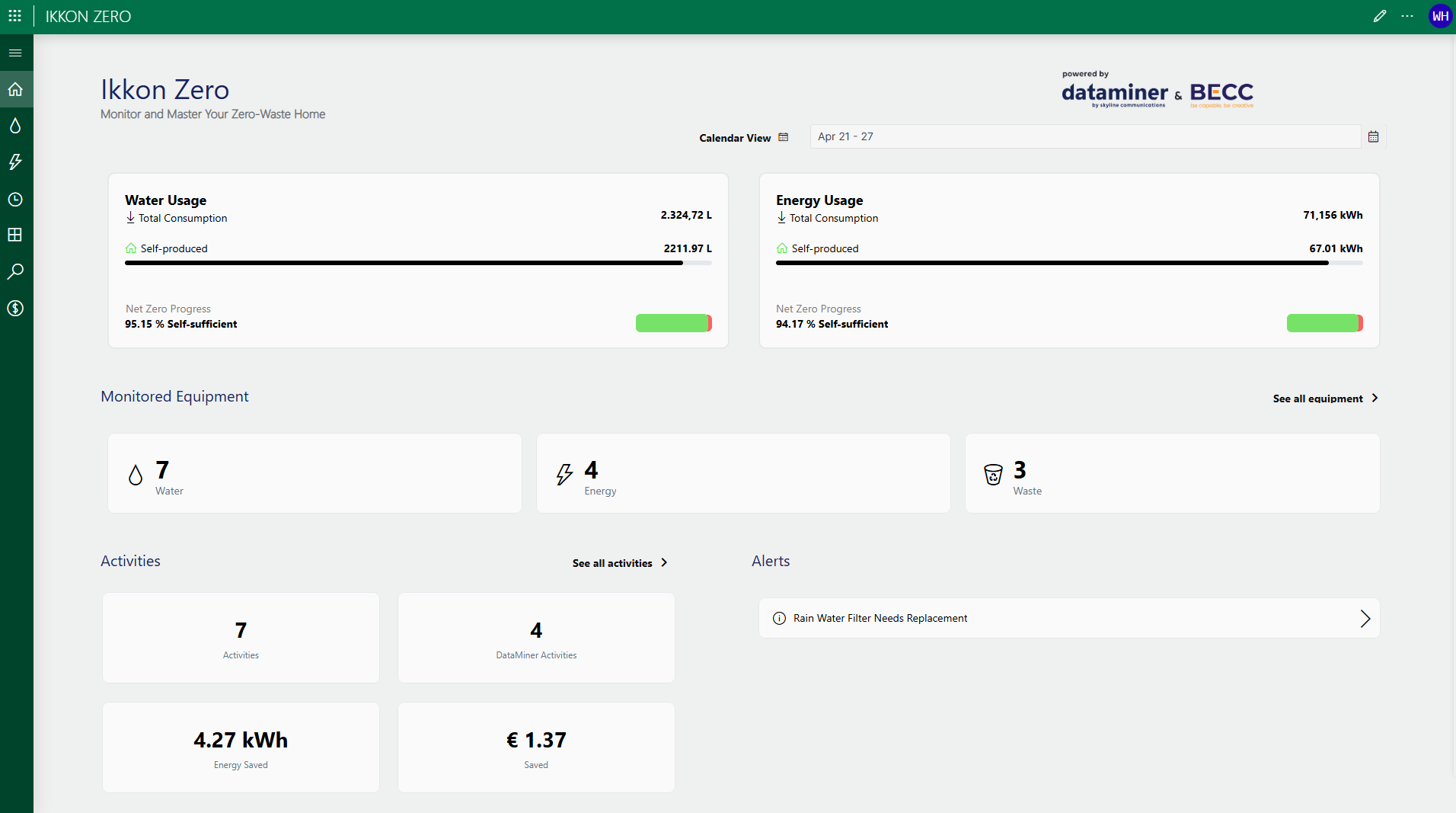 This low-code app’s landing page provides one of the most crucial insights: how self-sufficient the house is operating within the selected timeframe. It also offers key information about cost savings and the number of monitored devices. Additionally, actionable insights (called “Alerts”) are listed here, giving operators the opportunity to respond quickly and efficiently.
This low-code app’s landing page provides one of the most crucial insights: how self-sufficient the house is operating within the selected timeframe. It also offers key information about cost savings and the number of monitored devices. Additionally, actionable insights (called “Alerts”) are listed here, giving operators the opportunity to respond quickly and efficiently.
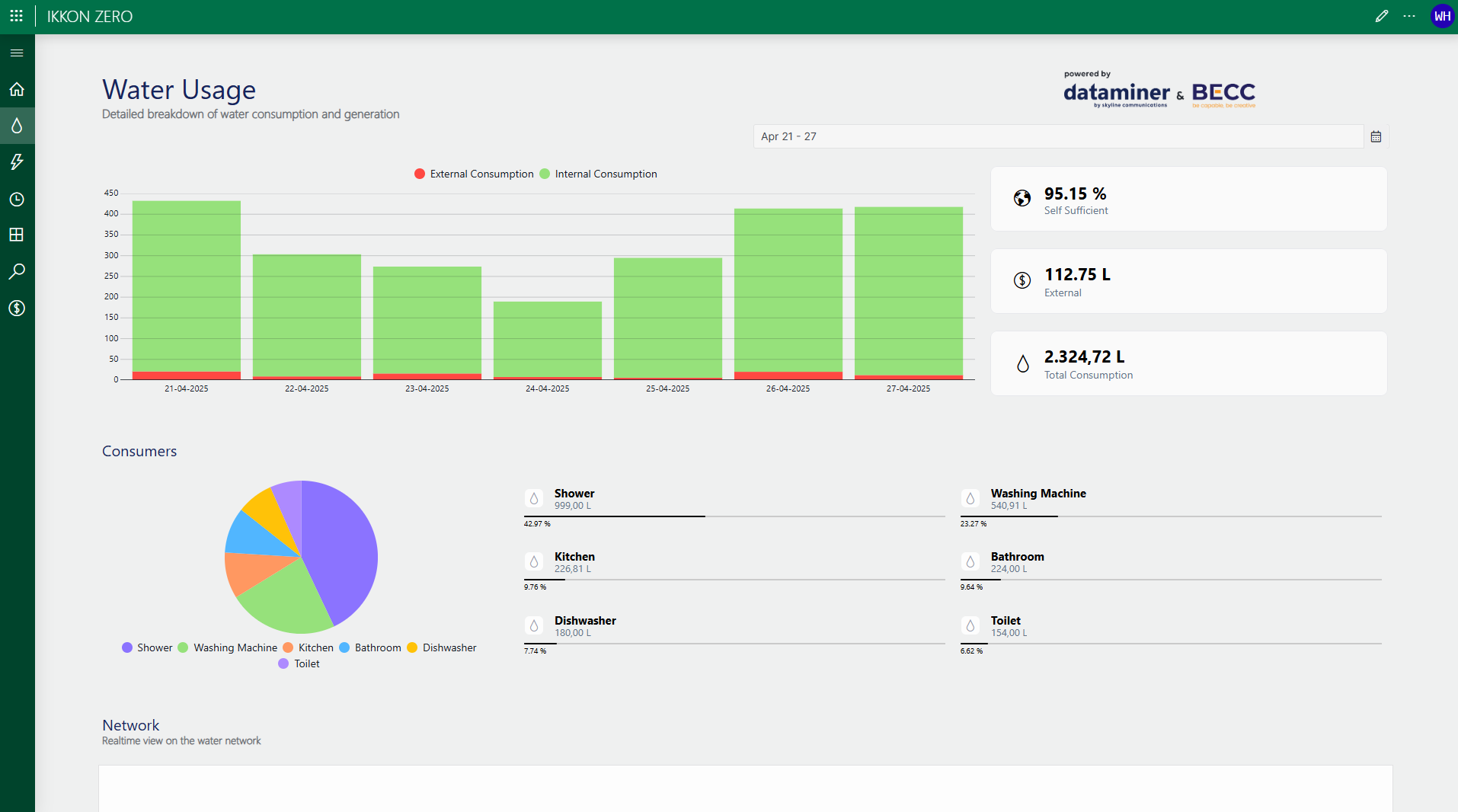 The Water Usage page provides detailed insights into daily water consumption, distinguishing between internal sources and external resources, such as water added from the public supply. It clearly shows how much of the home's water usage depends on external input, a key factor that negatively impacts the overall self-sufficiency score.
The Water Usage page provides detailed insights into daily water consumption, distinguishing between internal sources and external resources, such as water added from the public supply. It clearly shows how much of the home's water usage depends on external input, a key factor that negatively impacts the overall self-sufficiency score.
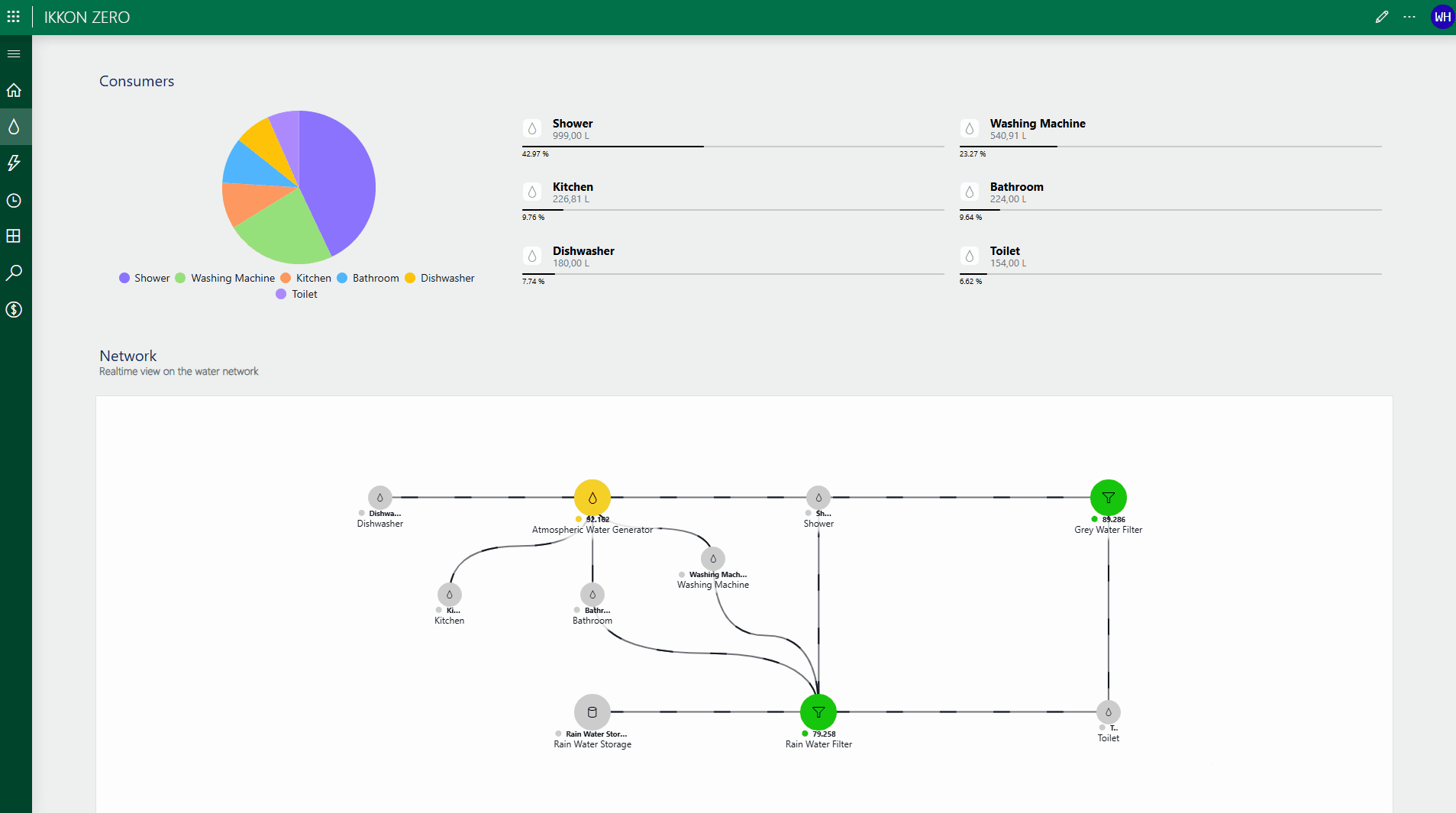 On the Water Usage page, you’ll also find a real-time visual of the water network, showing how water flows between different pieces of equipment and how each component is operating. Color indicators provide an instant overview, allowing operators to quickly identify equipment that requires attention.
On the Water Usage page, you’ll also find a real-time visual of the water network, showing how water flows between different pieces of equipment and how each component is operating. Color indicators provide an instant overview, allowing operators to quickly identify equipment that requires attention.
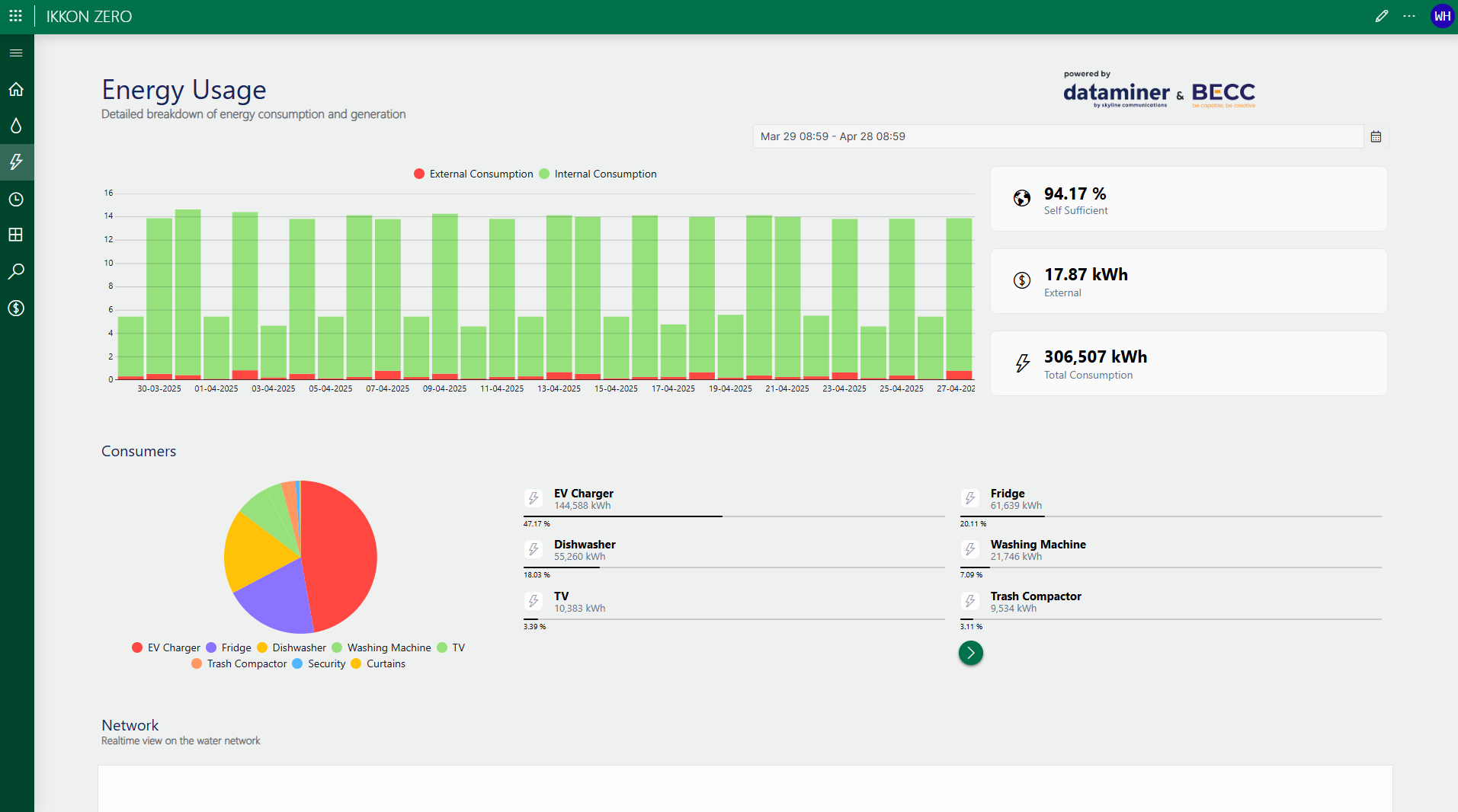 Similar insights are available for the energy component, including daily consumption metrics, aggregated usage statistics for each individual consumer, and a real-time visualization of the energy network.
Similar insights are available for the energy component, including daily consumption metrics, aggregated usage statistics for each individual consumer, and a real-time visualization of the energy network.
 Activities play a crucial role within this solution, representing the smart decisions DataMiner makes to enhance self-sufficiency. By consolidating data from various equipment along with external sources like weather information and energy prices into a single platform, DataMiner is able to make intelligent decisions across data silos, optimizing performance and efficiency.
Activities play a crucial role within this solution, representing the smart decisions DataMiner makes to enhance self-sufficiency. By consolidating data from various equipment along with external sources like weather information and energy prices into a single platform, DataMiner is able to make intelligent decisions across data silos, optimizing performance and efficiency.
 Activities can be inspected to understand the rationale behind DataMiner's decisions. This includes details about the current situation, the predictions made, and the decisions based on those predictions. Upcoming activities also offer the option for users to override decisions, providing flexibility and control.
Activities can be inspected to understand the rationale behind DataMiner's decisions. This includes details about the current situation, the predictions made, and the decisions based on those predictions. Upcoming activities also offer the option for users to override decisions, providing flexibility and control.
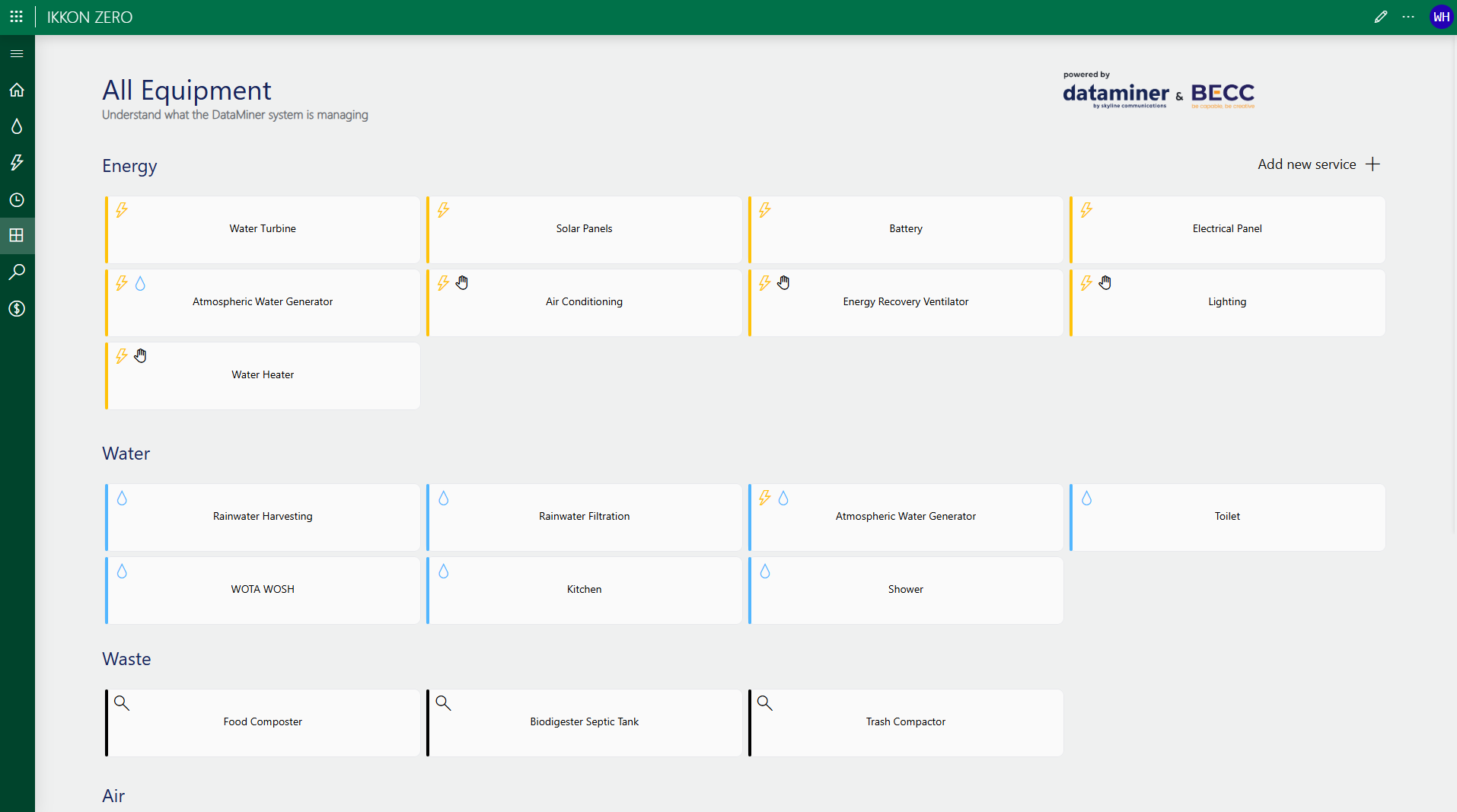 The Equipment Overview page provides a categorized summary of the equipment being monitored and/or controlled by DataMiner. It showcases a wide range of vendor-agnostic equipment data integrated within the platform, offering a comprehensive view of all connected devices.
The Equipment Overview page provides a categorized summary of the equipment being monitored and/or controlled by DataMiner. It showcases a wide range of vendor-agnostic equipment data integrated within the platform, offering a comprehensive view of all connected devices.
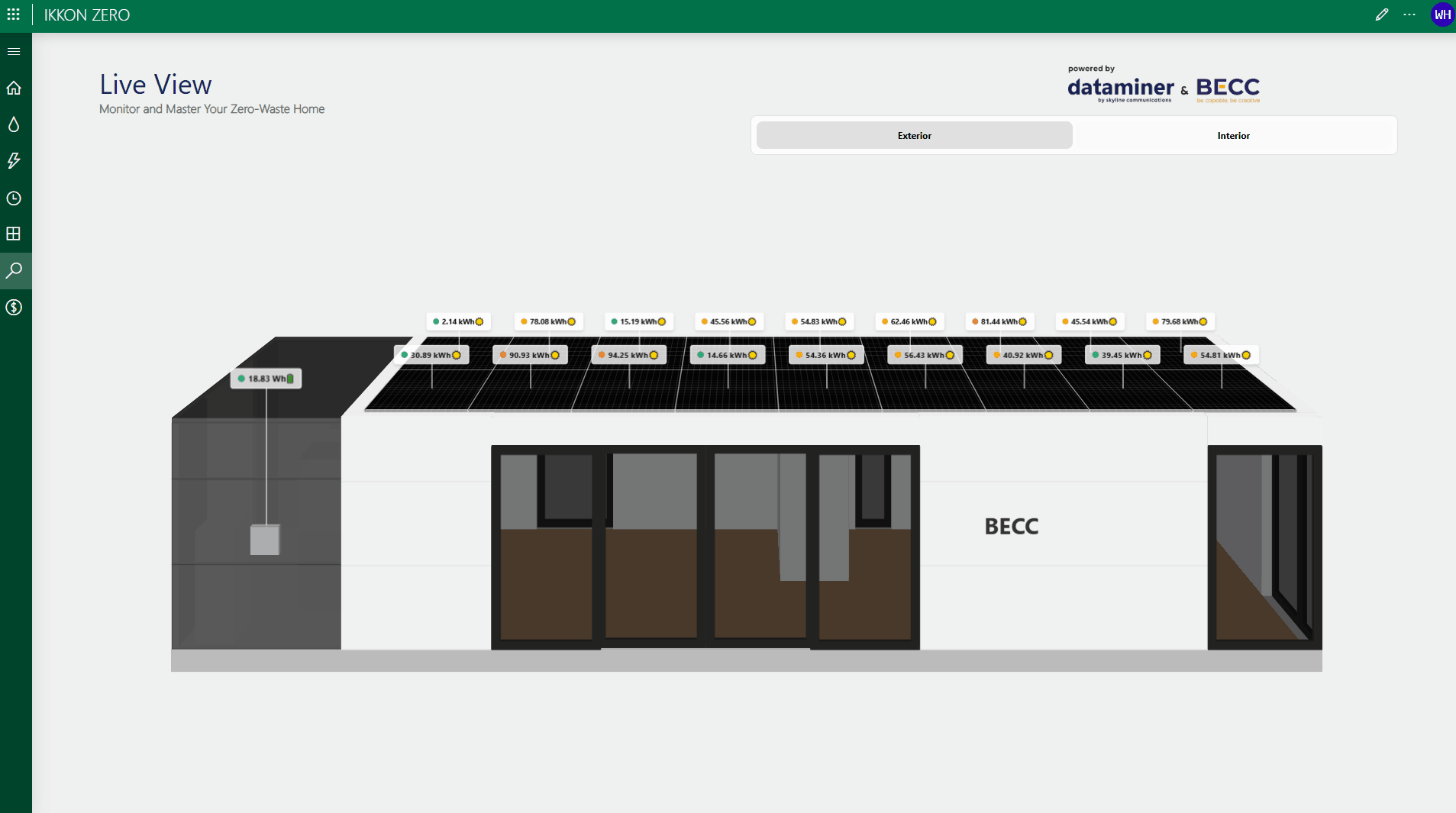 The Live View offers a 3D visualization, displaying real-time KPIs for each specific piece of equipment.
The Live View offers a 3D visualization, displaying real-time KPIs for each specific piece of equipment.
 The Financials page offers detailed insights into the house's financial performance, including the amount of energy generated and sold to the grid, as well as the financial gains achieved from these activities.
The Financials page offers detailed insights into the house's financial performance, including the amount of energy generated and sold to the grid, as well as the financial gains achieved from these activities.